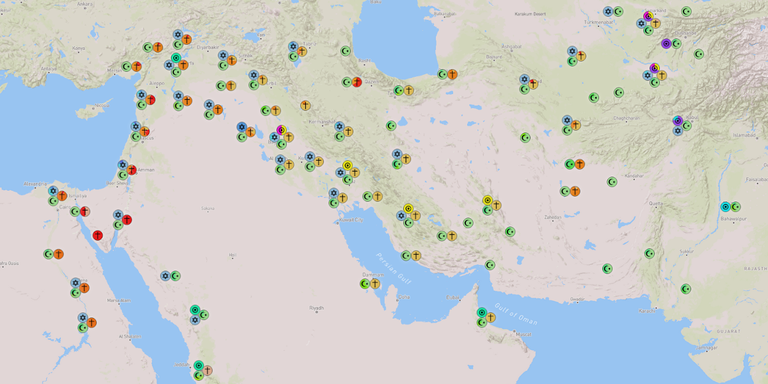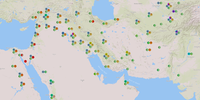
Weltecke, Dorothea et al. - Damast – A Research System to Analyze Multi-Religious Constellations in the Islamicate World
Weltecke, Dorothea, Steffen Koch, Ralph Barczok, Max Franke, Florian Jäckel, and Bernd A. Vest:
Damast – A Research System to Analyze Multi-Religious Constellations in the Islamicate World
Damast provides an interactive visualization to gain new insights into the multi‑religious constellations of the Middle East from the 7th to the 14th century. More than 8300 pieces of evidence from different religious communities from more than 440 places have been examined and are now accessible as a geo-temporal multi-view research system.
During the Medieval centuries, Muslim-dominated societies tolerated specific groups of Non-Muslims (especially Jews and Christians). In the new world that slowly emerged after the Arab conquests, Muslims accepted these groups on the basis of the idea of a contract of surrender that offered military protection in exchange for loyalty and a lower status, the so-called dhimmi status. This social system provided the framework for pragmatic cooperation and for religious diversity in the Medieval Islamicate world, albeit on unequal terms. Thus, in the many cities of the Islamicate world, diverse Muslim strands as well as different churches of Eastern Christianity and Jewish traditions were living side by side. Together, these religious groups formed the intricate fabric of everyday life and culture resembling the tissue of damask that displays different dominant colors depending on the perspective of the viewer. Damask (in German Damast), thus, is a symbol of this shared world and is our symbol of this research system.
The diachronic and synchronic complexity of this fabric is still understudied. Basic knowledge about the exact distribution and even the very existence of religious groups in many places is still lacking. Also, there is no synthesis of the wealth of existing research data on communities, on historical change or on geographical places.
Damast is the first synthesis of pertinent and approved research data and offers the integrated analysis of different religious traditions and their coexistence. Thus, traditional historiographical methods of heuristics and qualitative source analysis are being enhanced by embedding them into a new approach with visual analytics. At the same time, Damast boosted methods of visual analytics and information visualization.

